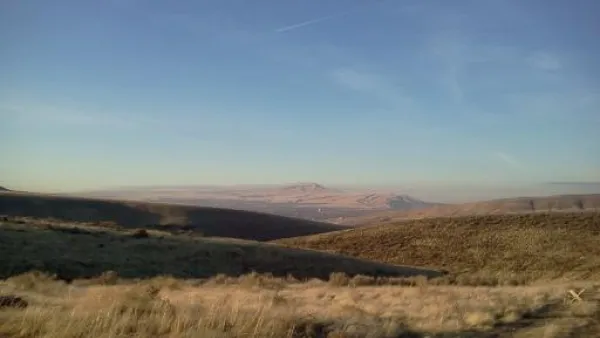Phil Taylor of the New York Times writes about an ensuing battle between a Montana wind power transmission project, backed by eminent domain rights, and Montana landowners, fighting for cultural conservation of their land.
Phil Taylor reports on the conflict between Larry Salois, a Montana native who owns property on a Blackfeet Indian Reservation, and Tonbridge Power Inc., with its 215-mile Montana-Alberta Tie Line project: a $209 million power line project to stretch all the way to Canada, and possibly the West Coast.
"The company, backed by a new state law passed in spring that allows private power line developers to condemn property, is asking state judges to grant easement rights across more than 30 miles of land so it can continue construction of the high-voltage line, which would run from Great Falls to Lethbridge, Alberta."
Salois, however, and other landowners like him who oppose the project, are fighting the state's new eminent domain law and condemnation practices. However, "their opposition illustrates a major challenge transmission projects face across the West in finding suitable pathways for new lines that can connect remote renewable energy resources to burgeoning populations in the Southwest and West Coast."
FULL STORY: Conservation Concerns, Landowner Opposition Stifle Mont. Transmission Project

National Parks Layoffs Will Cause Communities to Lose Billions
Thousands of essential park workers were laid off this week, just before the busy spring break season.

Retro-silient?: America’s First “Eco-burb,” The Woodlands Turns 50
A master-planned community north of Houston offers lessons on green infrastructure and resilient design, but falls short of its founder’s lofty affordability and walkability goals.

Delivering for America Plan Will Downgrade Mail Service in at Least 49.5 Percent of Zip Codes
Republican and Democrat lawmakers criticize the plan for its disproportionate negative impact on rural communities.

Test News Post 1
This is a summary

Test News Headline 46
Test for the image on the front page.

Balancing Bombs and Butterflies: How the National Guard Protects a Rare Species
The National Guard at Fort Indiantown Gap uses GIS technology and land management strategies to balance military training with conservation efforts, ensuring the survival of the rare eastern regal fritillary butterfly.
Urban Design for Planners 1: Software Tools
This six-course series explores essential urban design concepts using open source software and equips planners with the tools they need to participate fully in the urban design process.
Planning for Universal Design
Learn the tools for implementing Universal Design in planning regulations.
EMC Planning Group, Inc.
Planetizen
Planetizen
Mpact (formerly Rail~Volution)
Great Falls Development Authority, Inc.
HUDs Office of Policy Development and Research
NYU Wagner Graduate School of Public Service





























